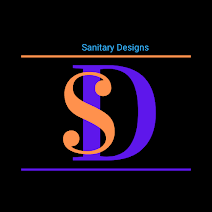Understanding Sharps Container Importance
Sharps containers are critical components in healthcare waste management, designed to safely dispose of needles, syringes, lancets, and other sharp objects. According to the CDC, nearly 8 million healthcare workers in the U.S. are at risk of needlestick injuries annually. Consequently, having robust sharps container protocols in place helps prevent injuries and the spread of infectious diseases. In addition, they play a vital role in maintaining OSHA compliance and protecting both medical staff and patients.
Design Standards and Regulations
To begin with, sharps containers must adhere to strict design standards. Moreover, about 65% of healthcare facilities use FDA-cleared sharps container, which ensure puncture resistance, leak-proof features, and proper labeling. Therefore, these specifications are not just recommended, they are mandatory for regulatory compliance. Additionally, color-coding and clear biohazard symbols enhance visibility, minimizing the risk of improper disposal and accidental exposure.
Placement and Capacity Guidelines
Next, proper placement and capacity management are essential for reducing injury risks. Studies show that 72% of needlestick injuries occur when sharps containers are either overfilled or placed out of immediate reach. Furthermore, OSHA guidelines recommend that sharps containers be placed at the point of use, with fill indicators and secure lids. Consequently, monitoring container levels and timely replacement can significantly decrease workplace injuries and contamination incidents.
Disposal Procedures and Environmental Impact
As containers reach capacity, safe and compliant disposal becomes a priority. Notably, approximately 85% of sharps waste is treated through autoclaving and incineration. Additionally, modern treatment methods have helped reduce emissions by 25% in the past decade, aligning with the EPA's environmental goals. Moreover, recycling initiatives are emerging, with some programs reclaiming plastic materials from sharps containers, further reducing the environmental footprint.
Post-Disposal Monitoring and Reporting
Finally, post-disposal tracking and reporting are crucial for accountability. Healthcare facilities are required to retain disposal records for up to three years, and over 30% of non-compliance violations are due to incomplete documentation. Furthermore, digital waste tracking systems enhance transparency and facilitate audits, ensuring all waste is managed according to regulations. Regular internal reviews help maintain compliance and avoid costly penalties.
Corporate Responsibility and Best Practices
Managing sharps container is a multifaceted responsibility that extends beyond basic compliance. By implementing stringent design standards, strategic placement, responsible disposal methods, and continuous monitoring, healthcare facilities can safeguard their staff and the environment. Therefore, staying proactive and adopting emerging best practices not only ensures legal compliance but also strengthens institutional reputation. Moreover, fostering a culture of safety and accountability helps set industry benchmarks for sustainable and responsible sharps waste management.
We care when we share....!
You may like these posts
Search for (SD) Blogs...?
List of Royal Followers
Labels
AD SPACE
Recent Posts
3/recentposts
All Time Hits Posts

Best Practices for Biomedical Waste Management
January 10, 2025

Why Proper Tattoo Waste Disposal Matters?
January 07, 2025

Difference Between Hazardous and Biohazard Waste
January 16, 2025

A Comprehensive Guide On Biohazard Waste Disposal in Tennessee
September 24, 2024

Important Tips to Reduce Your Healthcare Waste
November 13, 2024

A Detailed Guide On Pathological Waste
October 25, 2024

Common Mistakes When Disposing of Pharmaceutical Waste
November 06, 2024

Role of Medical Waste Management Company For Public Health
September 11, 2024
Popular Posts

Color Coding For Different Medical Waste Containers
August 01, 2024

The Hidden Work That Keeps Montgomery’s Healthcare Clean
October 31, 2025

How Nursing Home Waste Disposal Protects Residents and Staff
September 26, 2025

Important Tips to Reduce Your Healthcare Waste
November 13, 2024

How Veterinary Waste Disposal Protects Pets, People, and the Planet
November 04, 2025

Medical Waste Is Most Hazardous at the Point of Generation
September 29, 2025
Tags
- Biohazard Waste Disposal
- chemotherapy waste
- chemotherapy waste disposal
- dental waste disposal
- effective hazardous waste disposal
- hazardous trash
- hospital waste management
- Medical Waste Disposal
- Medical Waste Management
- pharmaceutical disposal
- pharmaceutical waste
- pharmaceutical waste containers
- pharmaceutical waste disposal
- sharps disposal
- veterinary waste disposal
- waste management
Recent Posts

Color Coding For Different Medical Waste Containers
August 01, 2024

Case Study on What Goes in Black Pharmaceutical Waste Containers
November 18, 2025

Handling Biohazard Medical Waste and Dangerous Sharps
August 19, 2024

Why Hospitals Use Black Dustbins for General Waste
November 14, 2025

The Importance of Correct Chattanooga Tattoo Needle Disposal
November 17, 2025

Understanding Sharps Container Importance
March 27, 2025

Important Tips to Reduce Your Healthcare Waste
November 13, 2024

How Veterinary Waste Disposal Protects Pets, People, and the Planet
November 04, 2025
Copyright Blogger | All Rights Reserved Royal Cricket Blog

0 Comments